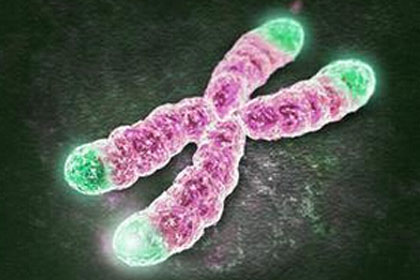2015年6月29日讯 /生物谷BIOON/ --近日,来自美国salk 研究所的研究人员在著名国际学术期刊nature发表了一篇文章,他们发现位于染色体末端的端粒可能在细胞自我摧毁,防止肿瘤发生方面发挥着比之前预期的更为重要的作用,根据端粒的这一功能可以开发新的肿瘤治疗策略。
随着每次细胞有丝分裂过程的进行,染色体末端的端粒结构逐渐缩短,最终,在经过许多次细胞分裂之后,端粒缩短到一定程度启动停止细胞分裂的信号,这一正常的生物学过程可作为预防癌症发生的重要保护措施,当细胞内这一信号途径发生改变,细胞会越过这一阶段执行自我摧毁,这一过程也叫crisis。但许多类型的癌细胞都可以通过保护端粒结构阻止crisis过程的发生,使细胞得以继续增殖。
在这项研究中,研究人员利用即时细胞成像技术对细胞经过一次甚至多次有丝分裂后的细胞命运进行了追踪,结果发现,在端粒融合的细胞内应激情况下细胞会延长最后一次有丝分裂过程所需时间,启动crisis过程,处在这一阶段的细胞会失去端粒保护蛋白,激活自我摧毁信号序列。
研究人员指出:一直以来都存在一种假设,科学家们认为细胞简单地发生染色体融合随后断裂分离,从而产生了基因组的不稳定性,最终导致死亡,但根据这项研究的结果来看,之前做出的假设是错误的。这项研究告诉我们细胞端粒出现异常会启动一条特异性的信号途径,并且只需要一个细胞周期便可引起crisis过程的发生,这与基因组不稳定性的缓慢稳定积累没有关系。
这项研究对于我们理解端粒如何调节细胞生长具有重要启示,同时也提示我们,在癌症治疗过程中,靶向端粒开发相关治疗策略可能对于提高化疗敏感性有重要帮助。(生物谷,原文http://news.bioon.com/article/6670641.html)

Cell death during crisis is mediated by mitotic telomere deprotection
Makoto T. Hayashi,Anthony J. Cesare,Teresa Rivera & Jan Karlseder
Tumour formation is blocked by two barriers: replicative senescence and crisis1. Senescence is triggered by short telomeres and is bypassed by disruption of tumour-suppressive pathways. After senescence bypass, cells undergo crisis, during which almost all of the cells in the population die. Cells that escape crisis harbour unstable genomes and other parameters of transformation. The mechanism of cell death during crisis remains unexplained. Here we show that human cells in crisis undergo spontaneous mitotic arrest, resulting in death during mitosis or in the following cell cycle. This phenotype is induced by loss of p53 function, and is suppressed by telomerase overexpression. Telomere fusions triggered mitotic arrest in p53-compromised non-crisis cells, indicating that such fusions are the underlying cause of cell death. Exacerbation of mitotic telomere deprotection by partial TRF2 (also known asTERF2) knockdown2 increased the ratio of cells that died during mitotic arrest and sensitized cancer cells to mitotic poisons. We propose a crisis pathway wherein chromosome fusions induce mitotic arrest, resulting in mitotic telomere deprotection and cell death, thereby eliminating precancerous cells from the population.
